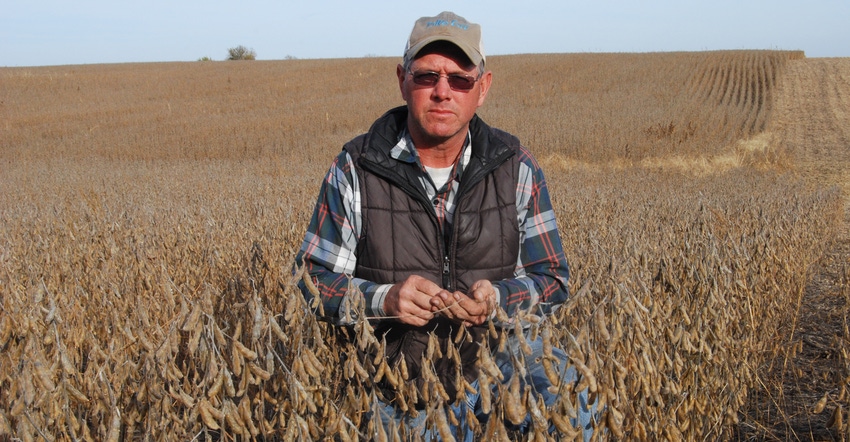
Harvest 2018 finally shifted into high gear across Iowa the third week of October, after weeks of rain delays. As crops waited to be harvested, grain quality problems surfaced in the state’s wettest areas. Mold grew on corn ears and soybean pods and beans sprouted in pods, some of which were splitting open. Harvest delays caused increased yield loss, abnormally high grain moisture content and lodging of plants in some fields.
Drier weather eventually came, and Randy Miller was guiding his combine through a soybean field on Oct. 24 near Lacona in south-central Iowa. “It’s good to get back in the field,” he said. “These beans are better than I thought they would be, but they vary a lot through the field. The quality issues with this fall’s harvest maybe aren’t quite as widespread as first thought, but they aren’t totally solved. It may be awhile as soybean processors and local elevators decide what they are doing for price discounts and what they are determining for bean quality damage; it varies from elevator to elevator. Buyers are determining if the quality damage is enough for them to reject a load of beans, or if they can accept the beans but dock the price.”
Underwater = lower yield
Soybeans in this field yielded better than anticipated. Miller’s yield monitor registered 52 bushels per acre and 10.5% moisture in the best areas. But overall, the field was averaging only 42 bushels per acre when low yield areas were figured in. “Our bean yields this year aren’t as good as I thought they’d be when we first began harvesting in September,” he notes. Then the rains came and kept coming, postponing harvest. Plants were turning black, pods were shattering and beans in pods sprouted.
Some parts of Miller’s fields were underwater this fall. In addition to lowering the quality of beans harvested, the wet fall, mold growth and related problems lowered yields, too. USDA will issue an update on its monthly crop production and yield estimate for Iowa in its November Crop Report. Miller doesn’t think we’ll know for sure about quality and yield effects on the Iowa and U.S. crop until perhaps early 2019. It’ll take time for USDA’s monthly surveys to sort out the wide variability in yield, and for the grain processing industry and other buyers to get a handle on crop quality.
Keep good harvest records
A crop insurance adjuster inspected Miller’s bean fields and took samples. If beans have 8% damage or above, the Federal Crop Insurance Corp. considers them eligible for a quality adjustment payment as part of the insurance coverage. If the beans are being hauled to an elevator or processor, FCIC uses the buyer’s grade determination on each load to decide if they qualify for the 8% minimum. If you are storing beans on-farm, the insurance adjuster’s sample determines whether they are eligible for a quality adjustment payment.
You’ll need “soft records” such as yield monitor data, weigh wagon or scales on grain carts, scale tickets and self-measure of grain bins to give to the insurance agent. Then, if an insurance loss is triggered, hard records such as official grain bin measurements and warehouse receipts or settlement sheets are required. “Nobody wants an insurance claim; we’d rather have a high-yielding, good quality crop,” says Miller. “But if you qualify for a payment, make sure you can prove it.”
About the Author(s)
You May Also Like




